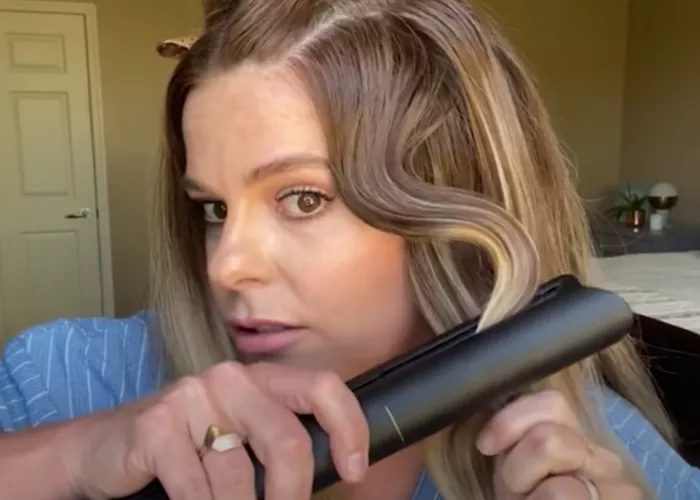Curls are a marvel of natural texture, but achieving definition without gel requires understanding how hair structure interacts with moisture and products. Gel-free styling focuses on enhancing the hair’s inherent elasticity and porosity. High-porosity hair absorbs moisture quickly but loses it just as fast, while low-porosity hair resists hydration, making product absorption tricky. To work with your hair’s unique needs, prioritize lightweight, water-based products that seal moisture without creating buildup. Ingredients like aloe vera, flaxseed, and honey act as natural humectants, drawing moisture into the hair while providing gentle hold.
Healthy curls start in the shower. Use a sulfate-free shampoo to cleanse without stripping natural oils, followed by a hydrating conditioner. For extra slip, detangle with a wide-tooth comb while conditioner is in your hair. Rinse with cool water to smooth the cuticle and lock in moisture. After washing, avoid rough towel-drying—instead, gently blot hair with a microfiber towel or cotton T-shirt to minimize frizz.
Step-by-Step Techniques for Effortless Definition
Begin with soaking-wet hair. Apply a leave-in conditioner using the “prayer hands” method, smoothing product from roots to ends. Follow with a curl cream or mousse, emulsifying it with water in your palms for even distribution. For tighter curls, section hair into four parts and use the “raking” technique: run your fingers through each section to separate and define curls.
Scrunching is crucial. Tilt your head sideways and scrunch hair upward toward your scalp to encourage clumping. If air-drying isn’t practical, use a diffuser on low heat. Cup sections of hair into the diffuser, lifting at the roots for volume, and hold for 30–60 seconds. Resist touching your hair as it dries—this disrupts the curl pattern. Once dry, fluff roots gently with your fingertips and spritz with a mix of water and a drop of essential oil for shine.
For overnight preservation, try the “pineapple” method: gather hair into a loose high ponytail with a silk scrunchie. This prevents tangling and preserves volume. Alternatively, wrap hair in a silk scarf or bonnet to reduce friction.
Top 7 Gel Substitutes for Every Curl Type and Budget
Curl Custards: Products like Aunt Jackie’s Don’t Shrink Flaxseed Elongating Curling Gel offer flexible hold with natural ingredients.
Aloe Vera Gel: Pure aloe vera hydrates and provides light hold. Mix with water in a spray bottle for a refreshing mist.
Flaxseed DIY Gel: Boil ¼ cup flaxseeds in 2 cups water, strain, and store in a jar. Add lavender oil for fragrance.
Shea Butter Creams: SheaMoisture’s Coconut & Hibiscus Curl Enhancing Smoothie defines while nourishing.
Mousse: Herbal Essences Totally Twisted Mousse adds volume without crunch for fine curls.
Honey-Based Sprays: Mix 1 tbsp honey with 1 cup water for a moisturizing curl refresher.
Jojoba Oil: A few drops smoothed over damp hair tames frizz and enhances shine.
Seasonal Adjustments for Year-Round Curl Success
In humid summers, avoid glycerin-heavy products that can cause puffiness. Opt for anti-humidity sprays with ingredients like pectin or marshmallow root. In dry winters, layer a leave-in conditioner under a thicker cream or butter to combat moisture loss. For windy days, protect curls with a silk-lined hat or headband.
Fixing Common Gel-Free Styling Issues
Frizz: Apply a small amount of argan oil to dry ends or use a boar bristle brush to smooth flyaways.
Flat Roots: Clip roots at the crown with small jaw clips while hair dries for lift.
Product Buildup: Clarify monthly with an apple cider vinegar rinse (1 part vinegar to 3 parts water).
Dryness: Pre-poo with coconut oil before shampooing to prevent moisture loss.
Celebrity Stylist Secrets for Red Carpet-Worthy Curls
Tracee Ellis Ross’s Trick: Use a Denman brush to define curls while wet, then air-dry for uniform spirals.
Lupita Nyong’o’s Routine: Refresh curls with rosewater spray for a hydrated, fragrant finish.
Rihanna’s Volume Hack: Tease roots gently with a wide-tooth comb before diffusing.
The Role of Haircuts in Gel-Free Definition
Regular trims (every 8–12 weeks) prevent split ends from fraying curls. Ask your stylist for layers to reduce bulk and enhance bounce. For tight coils, a tapered cut can highlight your natural shape. Avoid blunt cuts if you prefer a softer, more organic look.
Nutrition and Lifestyle Habits for Healthier Curls
What you eat impacts your hair. Incorporate protein-rich foods like eggs, lentils, and Greek yogurt to strengthen strands. Omega-3 fatty acids (found in salmon and chia seeds) boost shine. Stay hydrated—dehydration leads to dry, brittle curls. Reduce heat styling and opt for protective styles like braids or twists to minimize damage.
When to Seek Professional Help
If your curls remain limp or frizzy despite a solid routine, consult a curl specialist. They might recommend a protein treatment to balance moisture or a custom product cocktail. For color-treated curls, request Olaplex treatments to repair bonds without compromising curl pattern.
Embracing the Beauty of Imperfection
Curls are meant to be lived-in and dynamic. A little frizz or asymmetry adds character. If a section falls flat, twist it around your finger and secure with a bobby pin while damp. Release once dry for a quick fix. Celebrate the days when your curls defy expectations—perfection is overrated.
Conclusion
With patience and the right techniques, gel-free styling can unlock your curls’ full potential. Ditch the crunch, embrace softness, and let your natural texture shine. Your curls are a crown—wear them proudly!
Related topics:
How to Make Waves with Styling Gel?
What’s the Best Way to Achieve Defined Curls Using Styling Gel?
DIY Curl Activator Gel: Unleash Your Curls’ Potential


